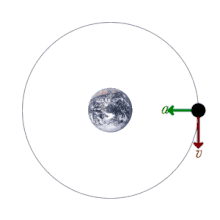চিরায়ত বলবিজ্ঞানের সময়রেখা
(চিরায়ত বলবিদ্যার সময়রেখা থেকে পুনর্নির্দেশিত)
| চিরায়ত বলবিজ্ঞান |
|---|
| বিষয়ের উপর একটি ধারাবাহিকের অংশ |
নিম্নে চিরায়ত বলবিদ্যার একটি সময়রেখা রয়েছে:

প্রাথমিক বলবিদ্যা[সম্পাদনা]
- খ্রিষ্টপূর্ব ৪র্থ শতাব্দি - এরিস্টটল এরিস্টটলীয় পদার্থবিজ্ঞানের ব্যবস্থা আবিষ্কার করেন, যা পরবর্তীতে অনেকাংশে ভুল প্রমাণিত হয়েছে।
- খ্রিষ্টপূর্ব ৪র্থ শতাব্দি - ব্যাবিলনীয় জ্যোতির্বিজ্ঞানীরা গড় বেগ উপপাদ্য ব্যবহার করে বৃহস্পতির অবস্থান গণনা করেছিল।[১]
- ২৬০ খ্রিষ্টপূর্ব - আর্কিমিডিস লিভার নীতি প্রদান করেন এবং প্লবতার সাথে ওজনের সম্পর্ক নির্ণয় করেন।
- ৬০ খ্রিষ্টপূর্ব - হিরো অব আলেকজান্দ্রিয়া মেট্রিকা, মেকানিক্স (ভারী বস্তু উত্তোলন নিয়ে), এবং নিউম্যাটিক্স (চাপ প্রয়োগে চলমান যন্ত্র নিয়ে) লিখেছিলেন।
- ৩৫০ - থিমিসটিয়াস জানিয়েছে, স্থিতি ঘর্ষণ গতীয় ঘর্ষণের চেয়ে বৃহত্তর।[২]
- ৬ষ্ঠ শতাব্দি - জন ফিলোপোনাস পর্যবেক্ষণের মাধ্যমে বলেছেন যে, দুটি ভিন্ন ভিন্ন ভরের বস্তু প্রায় একই গতিতে পতিত হয়। তিনি সমতা নীতি পরীক্ষা করেছিলেন।
- ১০২১ - আল-বিরুনি শূন্যস্থানে কোন বিন্দু বর্ণনা করতে তিনটি লম্ব স্থানাঙ্ক ব্যবহার করেছিলেন[৩]
- ১১০০-১১৩৮ - ইবনে বাজা অবসাদের ধারণা বিকশিত করেছিলেন, যা শ্লোমো পাইনসের মতে বলের লাইবনিৎস ধারণার পূর্বসূরী।[৪]
- ১১০০-১১৬৫ - আবু আল-বারাকাত হিবাতুল্লাহ বিন মালাক আল-বাগদাদী আবিষ্কার করেন যে বল বেগের নয়, বরং ত্বরণের সমানুপাতিক, যা চিরায়ত বলবিজ্ঞানের একটি মৌলিক ধারণা।[৫]
- ১৩৪০-১৩৫৮ - জঁ ব্যুরিদাঁ ইম্পেটাসের ধারণা বিকশিত করেন।
- ১৪শ শতাব্দি - অক্সফোর্ড ক্যালকুলেটরস এবং ফরাসী সহযোগীরা গড় বেগ উপপাদ্য প্রমাণ করেন।
- ১৪শ শতাব্দি - নিকোল ওরেসমে অবিচ্ছিন্নভাবে ত্বরিত পরিবর্তনের জন্য সময়ের বর্গের সূত্র উদ্ভাবন করেন।[৬] ওরেসমে যদিও এই আবিষ্কারটিকে সম্পূর্ণই বুদ্ধিগত অনুশীলন হিসাবে বিবেচনা করেছিলেন যার সাথে কোনও প্রাকৃতিক ঘটনা বর্ণনার সাথে কোনও প্রাসঙ্গিকতা নেই এবং ফলস্বরূপ ত্বরিত বস্তুর গতির সাথে এর কোনও সংযোগ সনাক্ত করতে ব্যর্থ হয়েছিলেন।[৭]
- ১৫০০-১৫২৮ - আল-বিরজান্দি পৃথিবীর আহ্নিক গতি বর্ণনার জন্য "বৃত্তীয় জড়তার" তত্ত্ব বিকশিত করেন।[৮]
- ১৬শ শতাব্দি - ফ্রান্সেসকো বিয়াটো এবং লুকা গিনি পরীক্ষামূলকভাবে মুক্ত পতনের এরিস্টটলীয় দৃষ্টিভঙ্গির বিরোধিতা করেন।[৯]
- ১৬শ শতাব্দি - ডোমিংগো ডি সোটো ধারণা দেন যে সমজাতীয় মাধ্যমের মধ্য দিয়ে পতনশীল বস্তু সমানভাবে ত্বরান্বিত হয়।[১০][১১] সোটোর ধারণায় অবশ্য গ্যালিলিওর পড়ন্ত বস্তুর তত্ত্বের মধ্যে থাকা অনেকগুলি যোগ্যতা এবং পরিমার্জনা অনুপস্থিত ছিল। উদাহরণস্বরূপ, গ্যালিলিওর মতো তিনি স্বীকৃতি জানাতে পারেন নি যে কোনও বস্তু শূন্যস্থানে অভিন্ন ত্বরণ নিয়ে পতিত হয় এবং অন্যথায় এটি শেষ পর্যন্ত একটি অভিন্ন প্রান্তিক বেগে পৌঁছায়।
তথ্যসূত্র[সম্পাদনা]
- ↑ Ossendrijver, Mathieu (২৯ জানু ২০১৬)। "Ancient Babylonian astronomers calculated Jupiter's position from the area under a time-velocity graph"। Science। 351 (6272): 482–484। ডিওআই:10.1126/science.aad8085। পিএমআইডি 26823423। বিবকোড:2016Sci...351..482O। সংগ্রহের তারিখ ২৯ জানুয়ারি ২০১৬।
- ↑ Sambursky, Samuel (২০১৪)। The Physical World of Late Antiquity। Princeton University Press। পৃষ্ঠা 65–66। আইএসবিএন 9781400858989।
- ↑ ও'কনর, জন জে.; রবার্টসন, এডমুন্ড এফ., "Al-Biruni", ম্যাকটিউটর গণিতের ইতিহাস আর্কাইভ, সেন্ট অ্যান্ড্রুজ বিশ্ববিদ্যালয়।:
"One of the most important of al-Biruni's many texts is Shadows which he is thought to have written around 1021. [...] Shadows is an extremely important source for our knowledge of the history of mathematics, astronomy, and physics. It also contains important ideas such as the idea that acceleration is connected with non-uniform motion, using three rectangular coordinates to define a point in 3-space, and ideas that some see as anticipating the introduction of polar coordinates."
- ↑ শ্লোমো পাইনস (১৯৬৪), "La dynamique d’Ibn Bajja", in Mélanges Alexandre Koyré, I, 442-468 [462, 468], Paris. (cf. Abel B. Franco (October 2003). "Avempace, Projectile Motion, and Impetus Theory", Journal of the History of Ideas 64 (4), p. 521-546 [543]: "Pines has also seen Avempace's idea of fatigue as a precursor to the Leibnizian idea of force which, according to him, underlies Newton's third law of motion and the concept of the "reaction" of forces.")
- ↑ পাইনস, শ্লোমো (১৯৭০)। "Abu'l-Barakāt al-Baghdādī , Hibat Allah"। Dictionary of Scientific Biography। 1। নিউ ইয়র্ক: Charles Scribner's Sons। পৃষ্ঠা 26–28। আইএসবিএন 0-684-10114-9।: (cf. Abel B. Franco (October 2003). "Avempace, Projectile Motion, and Impetus Theory", Journal of the History of Ideas 64 (4), p. 521-546 [528]: Hibat Allah Abu'l-Barakat al-Bagdadi (c.1080- after 1164/65) extrapolated the theory for the case of falling bodies in an original way in his Kitab al-Mu'tabar (The Book of that Which is Established through Personal Reflection). [...] This idea is, according to Pines, "the oldest negation of Aristotle's fundamental dynamic law [namely, that a constant force produces a uniform motion]," and is thus an "anticipation in a vague fashion of the fundamental law of classical mechanics [namely, that a force applied continuously produces acceleration].")
- ↑ Clagett (1968, p. 561), Nicole Oresme and the Medieval Geometry of Qualities and Motions; a treatise on the uniformity and difformity of intensities known as Tractatus de configurationibus qualitatum et motuum. Madison, WI: University of Wisconsin Press. আইএসবিএন ০-২৯৯-০৪৮৮০-২.
- ↑ Grant, 1996, p.103.
- ↑ F. Jamil Ragep (2001), "Tusi and Copernicus: The Earth's Motion in Context", Science in Context 14 (1-2), p. 145–163. Cambridge University Press.
- ↑ "Timeline of Classical Mechanics and Free Fall"। www.scientus.org। সংগ্রহের তারিখ ২০১৯-০১-২৬।
- ↑ Sharratt, Michael (1994). Galileo: Decisive Innovator. Cambridge: Cambridge University Press. আইএসবিএন ০-৫২১-৫৬৬৭১-১, p. 198
- ↑ Wallace, William A. (2004). Domingo de Soto and the Early Galileo. Aldershot: Ashgate Publishing. আইএসবিএন ০-৮৬০৭৮-৯৬৪-০ (pp. II 384, II 400, III 272)

